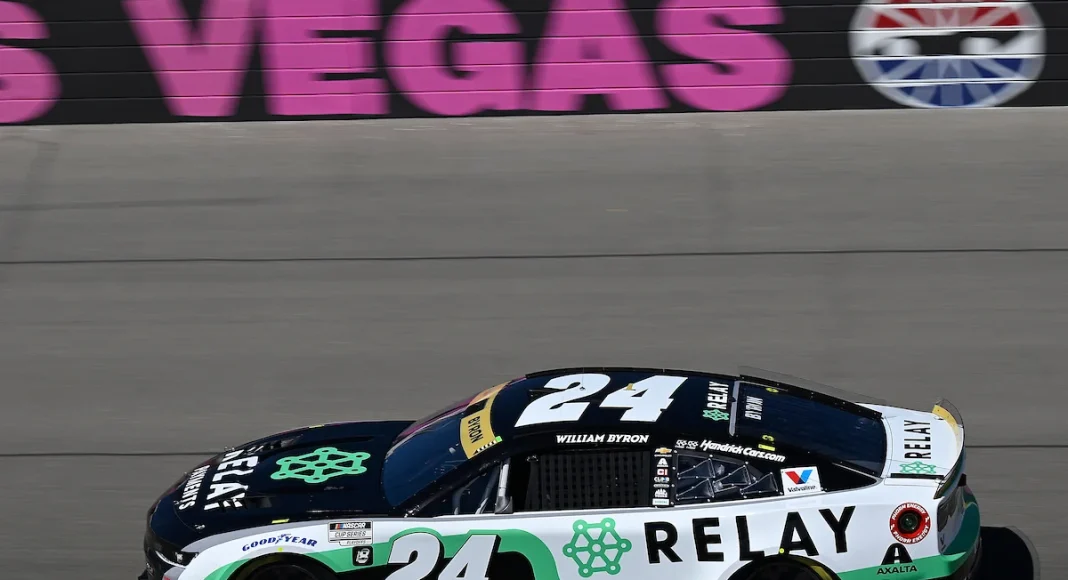William Byron’s aspirations for a championship in the NASCAR Cup Series took a dramatic downturn on Sunday at Las Vegas Motor Speedway after a late-race incident left him out of playoff contention. The William Byron NASCAR playoff crash occurred when a collision with Ty Dillon on lap 237 ended Byron’s day prematurely, significantly affecting his path forward in the postseason.
Byron’s Strong Start and Sudden Setback
Throughout Sunday’s race, Byron demonstrated competitive speed, leading the Las Vegas field on three occasions for a total of 55 laps and securing 17 stage points. The last time he assumed the lead was on lap 231, only moments before disaster struck. As the race entered a crucial phase, Ty Dillon slowed down to enter pit road on the inside while Byron, running second, exited turn four at high speed. The resulting crash was both unexpected and forceful, instantly ending Byron’s promising run.
“I didn’t know, I didn’t have any indication. If I had any indication, I would’ve been higher [up on the track] and not run full speed into the back of him. That was a huge hit,”
Byron said. Just bummed out. — William Byron, driver
Moments Leading Up to the Crash
Ty Dillon, reflecting on the incident, was as confounded as Byron by the communication breakdown. Dillon described the standard protocol they follow, relying on the spotter to alert other drivers when cars pit unexpectedly. However, something appeared to go wrong in this instance, as Byron was unaware of Dillon’s intentions to pit.

“That’s kind of how we’ve operated all year is the spotter will let him know,”
Dillon said.
“He was so far back then that I don’t know if he couldn’t see [I waved my hand down the backstretch] or I didn’t get it far enough out. My spotter said he let the 24 know so I don’t know if it was a lack of communication. I didn’t mean anything egregious getting on pit road. I was looking forward, trying to hit marks and get on as efficiently as possible because you’re still racing for everything out there, I hate it for them.”
— Ty Dillon, driver
Byron admitted he would analyze the situation further, stating,
“There’s nothing to discuss. I’ll probably stew over it for hours and go look at my in-car to see if he waved.”
— William Byron, driver
Impact on Byron’s Playoff Run
This event was especially painful for Byron, given that Sunday’s race marked the first time he led double-digit laps since his Iowa victory ten weeks ago. Despite showing strength ten times this season by leading sizeable portions of races, he had managed it only twice during the latter half. Instead of capitalizing on the opportunity in Las Vegas, Byron exited with a 36th-place finish and a damaged car, all but ending his title chase in this round.
“These opportunities are few and we had a really good car today, in contention to win, but everything has to go right in this Round of 8, and that was something major that was out of our control,”
Byron said.
“We just gotta go win the next two.”
— William Byron, driver
Looking Ahead to Talladega and Beyond
Despite the devastation of Las Vegas, hope remains as Byron sets his sights on the next challenge at Talladega. Historically, he has performed well at the Alabama superspeedway, averaging 40.4 points in NextGen races and earning a seventh-place average finish there. These statistics lead the field and give Byron and his team cause for measured optimism as they aim to rebound from the latest setback.
The William Byron NASCAR playoff crash has underscored the importance of precise communication and flawless execution in the high-stakes atmosphere of NASCAR’s postseason. With just two races left in this round, Byron’s margin for error is gone, but his past performance at Talladega offers a sliver of hope as he tries to keep his championship dreams alive.

